 Sunday/Weekend
Sunday/Weekend

Conical hats produced in the central Thừa Thiên- Huế Province, which includes the historic Huế City, are similar to those made in other regions in the country. But innovations by local artisans have added charm and made Huế hats famous.
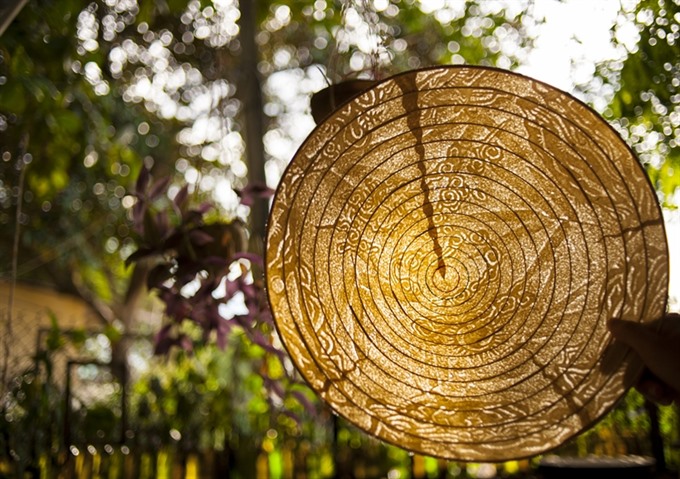 |
| Beautiful patterns: A trúc chỉ conical hat, an artistic variation of the hat. VNS Photo Lê Huy Hoàng Hải |
Conical hats produced in the central Thừa Thiên- Huế Province, which includes the historic Huế City, are similar to those made in other regions in the country. But innovations by local artisans have added charm and made Huế hats famous. Phước Bửu reports.
Conical hats are synonymous with Việt Nam, and hat-making artisans in the former capital city of Huế have added a little extra charm to the iconic headwear.
Conical hats have been made and worn by Vietnamese for some 3,000 years. Images of people wearing the hats are depicted on Đông Sơn and Ngọc Lũ bronze drums. Along with their long history, conical hats remain popular today thanks to their ability to shield wearers from the elements.
Women wearing traditional dresses of áo dài or áo bà ba use conical hats as an accessory, either wearing or carrying them. Although in the past bicycle and motorcycle riders would wear conical hats, safety concerns mean you’re more likely to see people zooming by wearing helmets.
Huế is known for producing the hats. Researchers suggest that the area’s abundant sunshine during summer and heavy rain in the winter made hats more popular than in other parts of the country, especially among women.
“I saw women from Huế wearing conical hats everywhere, at all times and from all walks of life. That interested me and I tried to capture images of women wearing the unique hats,” says freelance photographer Võ Hương Lan.
The popularity drives the production of this type of hat in the former capital city. In the past, almost every village in and around Huế had weavers who could make conical hats for their own use and for sale.
Today there are 15 villages making conical hats, including those working on the palm leaf processing and on weaving the hats.
They are Đốc Sơ, Mỹ Lam, An Lưu, Đồng Đỗ, Đồng Di, Tân Mỹ, Thanh Dương, Truyền Nam, Dương Nổ, Thanh Tân, Hương Cần, Thủy Thanh, and Phủ Cam.
Phủ Cam, Mỹ Lam and Đốc Sơ are known as the biggest producers of Huế hats. The villagers were the main suppliers of good quality hats during the Nguyễn Dynasty (1802-1945) in Huế.
In addition to these villages, others in mountainous areas of A Lưới, Nam Đông and Bình Điền supply the unprocessed leaves and bamboo for making hat frames.
Đốc Sơ Village is not only known for the good quality hats but also as a standard material supplier.
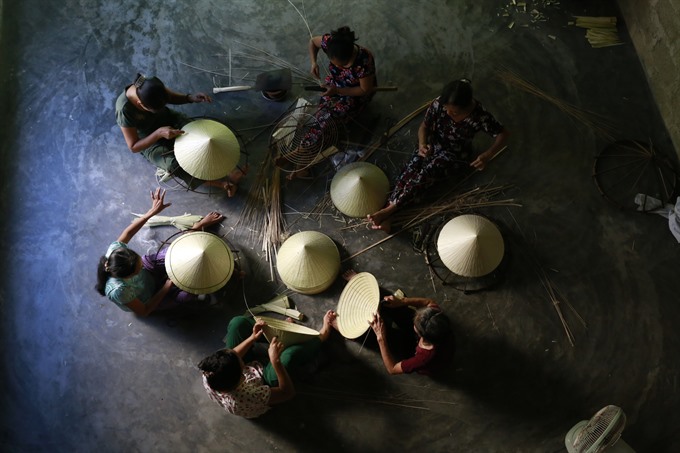 |
| Traditional skills: Huế artisans making conical hats. VNS Photo Nguyễn Văn Sum |
Hoàng Thị Khánh Nhật, owner of a leaf processing workshop in the village says her dry leaves have been the main supply for both weavers at the locality and other provinces around the country.
According to Nhật, fresh leaves are transported from mountainous areas to her workshop before they are separated into individual petals and dried under the sun or by charcoal.
Some of the villages have up to 100 weavers while others have no more than ten, including some who do the work part-time when not working on their farms.
Võ Thị Toàn, a 75-year-old weaver living in An Lưu Village, says she has been weaving conical hats since she was thirteen and has no plans to retire yet.
“This is not a hard job but it requires patience. Skillful weavers make nice, durable hats while others produce hats of lower quality,” she says.
“In my era, almost every woman knew how to make this type of headwear for their own use. It is quite easy and it’s not time consuming for one to learn the techniques.”
To make a hat, makers first iron the leaves to flatten them and put them on round bamboo frames. Normally a Huế hat has 16 frames arranged on a conical frame holder, then they start to tie the leaves into the frames using a needle and thin plastic thread.
They stick a round cotton button on top and glue the tiny needle holes to make the item. Wearers can tie a silk ribbon on the bottom edge to help stop the hat from blowing away in the wind.
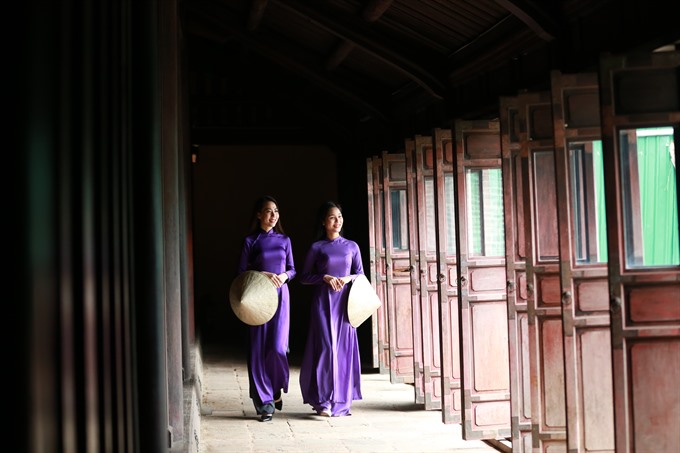 |
| National dress: Conical hats are a great addition to any outfit. VNS Photo Nguyễn Văn Sum |
In general, Huế hats use the same materials, shape and techniques like those used by weavers in other localities. However, those made by Huế weavers are said to be more elegant and more durable.
Researchers explain that the difference is due to the royal roots of Huế, saying that local weavers had to make the best hats for use by the royal family.
This may be apocryphal, but dedication and innovation to conical hats mean that Huế hats and their weavers are the best in the country. Variations of Huế hats include ones with poems or inscriptions, known as nón bài thơ. Today, local weavers make a range of hats including trúc chỉ hats and lotus leaf hats.
Nón bài thơ are normal conical hats using the same materials. But weavers use two layers of leaves instead of one. Leaves making the additional layer can be inscribed with poems and drawings.
With these, the poems and images can be seen when the sun shines on the hat, giving them the name of ‘poem conical hat’.
Poem conical hats are believed to come from Tây Hồ Village in Huế, which was famous for skillful hat makers and beautiful girls wearing conical hats in the 1960s. At that time, a hat-making artisan, who was also a poet, came up with the idea of writing poems on the hat. The idea proved popular and was quickly adopted by other makers.
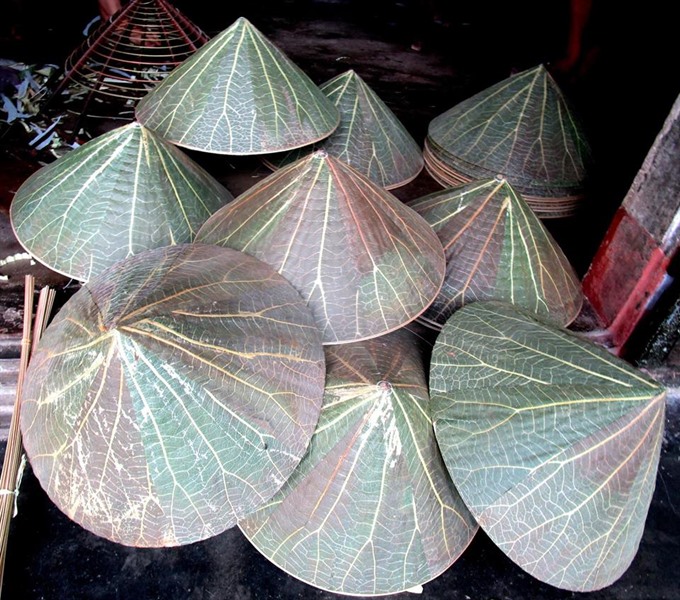 |
| Modern twist: Lotus leaf conical hats, an innovation by Huế locals. VNS Photo Trần Bá Đại Dương |
Another style of hat that is popular today is the embroidered conical hats. During the final stages of making a hat, weavers embroider the surface of the leaf with images of landscapes around Huế like Thiên Mụ Pagoda and Trường Tiền Bridge, or girls wearing long dresses.
Trúc chỉ conical hats appeared for the first time in 2013 when trúc chỉ artists replaced the palm leaves with bamboo pulp paper. The paper is produced with artistic patterns on it, which can be seen during the final stages of production. Like the poetry, the images on trúc chỉ hats are best seen in sunlight.
Despite being favoured by the art community and those who love innovation in traditional crafts, the paper hats are not suitable for heavy rain.
Ngô Đình Bảo Vi, director of the Trúc Chỉ workshop, says the artists do not want to inspire a revolution in making conical hats, but to bring the work closer to art by using the special kind of paper instead.
Earlier this year, Nguyễn Thanh Thảo, a graduate from Huế University of Arts, started using lotus leaves, which are found in abundance in Huế, to make a covering layer on the traditional conical hats.
Thảo was born in Đốc Sơ, one of the most well-known villages for hat making in Huế, and has been around the headwear-making process almost every day. “Adding a layer of lotus leaf to the hats makes them more charming,” he says.
He soaks the lotus leaves in bleach and dry them before handing them over to the hat weavers he works with to make a cover on the palm leaf hats. The technique is popular, and many buyers are fond of the lotus leaf hats because they remain functional but look interesting with the new cover.
These innovations have sustained the popularity of Huế’s conical hats. The typical beauty of Huế and the image of school girls riding bikes along sunny streets, wearing white long dresses and conical hats, is sure to endure for many years to come.
In general, innovative additions applied to traditional crafts can help preserve the traditional Vietnamese skills that are being kept alive by many of Huế’s artisans. VNS
 |
| Nearly complete: A girl puts the finishing touches to a conical hat. VNS Photo Nguyễn Văn Sum |
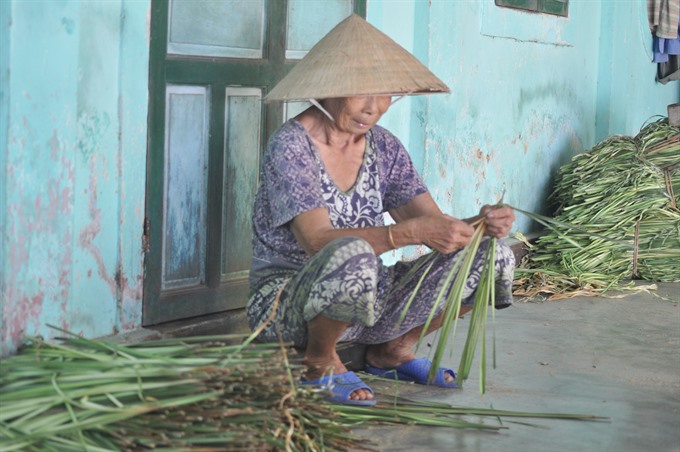 |
| Forging ahead: A woman tears palm leaves before they are processed for hat making. VNS Photo Phước Bửu |
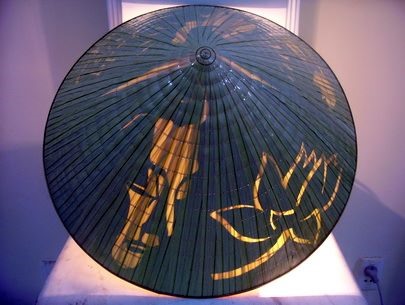 |
| Picture of peace: An image of Buddha on a conical hat, a type of nón bài thơ. Photo danviet.vn |




